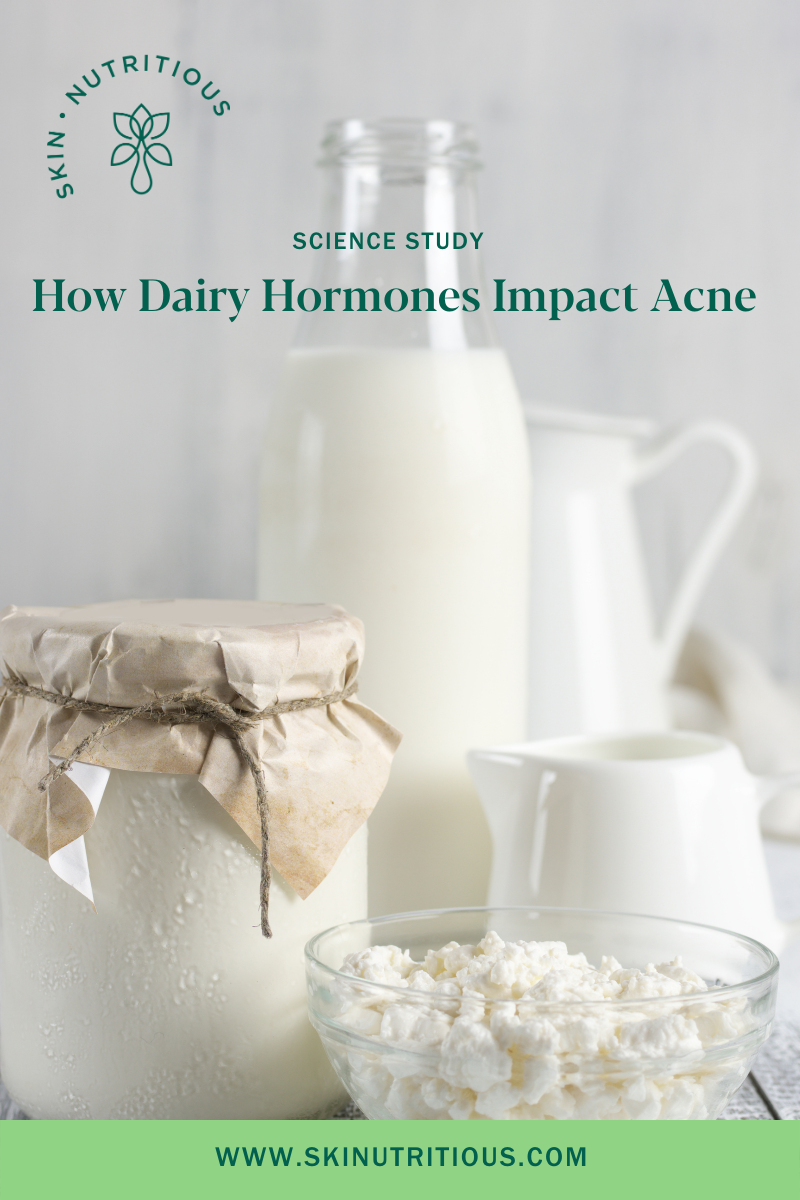How Cow's Milk is Triggering Hormonal Acne

Did you know that hormonal acne can be aggravated by foods in our diet? Hormonal acne is triggered by an overproduction of androgen hormones, such as testosterone, DHT, and IGF-1. Foods like cow’s milk elevate our androgen hormones to excessive levels, creating an imbalance in our body and skin. These high level hormones signal our skin to produce excessive oil, leading to clogged pores, period breakouts, and even cystic acne.
Cow's milk has over 60+ naturally occurring hormones, even if it is organic, lactose-free, or "hormone-free". Natural cow hormones cannot be separated from the milk. Cow’s milk is designed to grow a newborn 80 lbs calf to an adult cow weighing 700-1,000 lbs. "Hormone-free" labels indicate that no additional hormones such as rBST have been injected into the cow. But all its natural growth hormones are still present.
Here’s a shortlist of the 60+ hormones in your average glass of milk – even the organic, raw, and bovine growth hormone-free milk (source: Dr. Mark Hyman):
•testosterone (acne-aggressor)
•insulin like growth factor 1 (IGF-1) (acne-aggressor)
•5α-androstanedione (acne-aggressor)
•5α-pregnanedione (acne-aggressor)
•20α-dihydropregnenolone
•progesterone (from pregnenolone)
•5α-pregnan-3β-ol-20-one, 20α- and 20β-dihydroprogesterone (from progesterone)
•5α-androstene-3β17β-diol
•5α-androstan-3β-ol-17-one
•androstenedione
•dehydroepiandrosterone sulphate acyl ester
•insulin like growth factor 2 (IGF-2)
•insulin
Several scientific studies have found a correlation between acne and cow’s milk. In 2005, a study conducted William F. Danby team looked at the correlation of acne and dairy consumption in over 47,000 high school women. They found that cow’s milk as well as “Instant breakfast drink, sherbet, cottage cheese, and cream cheese were also positively associated with acne.”1
Another study published in 2012 observed the food diaries of 44 acne patients and 44 control patients ages 18-30 over a period of 3 months. The study found that acne cases had a significantly higher frequency of milk and ice cream consumption than the control counterparts. It concluded that the frequency of milk and ice cream intake were positively associated with acne.2
In my professional and personal experience, consuming products with cow's milk is one of the easiest ways to keep acne alive. Even for clients who eat very healthy and clean during the week can be triggered from even one "treat" moment of dairy. If you struggle with acne, I strongly recommend to remove this food completely from your diet including cow milk, creamers, cheese, yogurt, whey protein, ice creams, baked goods, creamy dressings, alfredo sauce, pesto, and creamy soups. Even one bite could trigger a hormonal pimple.
Want clearer skin? Switch to non-dairy milk or goat/sheep products instead. Unsweetened almond milk, hemp milk, and coconut milk are all great alternatives to cow’s milk. They’re fortified with many of the same vitamins and minerals. Soy milk is an allergen for some, but not an acne aggressor. Even goat and sheep milk products contain fewer hormones and lower your chance for breakouts. With so many options out there, you’re sure to find one that is right for you and your skin!
In love, health, and community,


Elise May, CN + LE, is a holistic esthetician, acne nutritionist, and founder of Skin Nutritious. Since 2009, she has helped over 1,300 clients overcome acne with a unique blend of coaching, treatments, and holistic skincare.
Work with Elise.
• In San Francisco - book online here.
• Worldwide Clear Skin eConsults book here.
.
.



